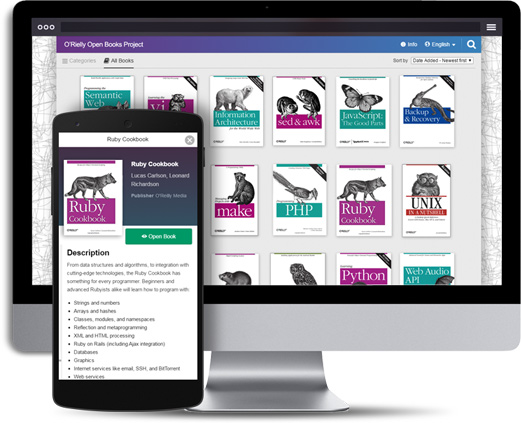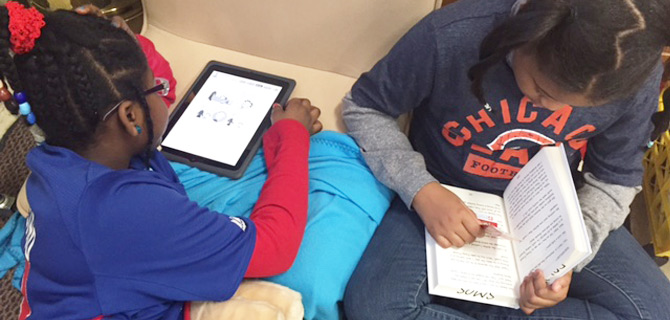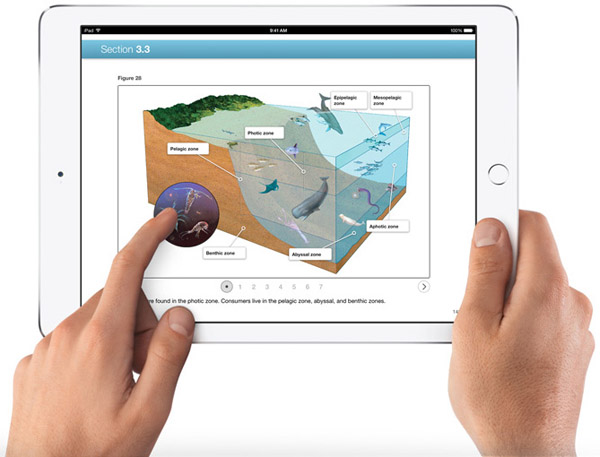Creating a Technologically Balanced Classroom
Flexible learning platforms, including elearning and digitized classrooms, are just the latest innovative uses of technology in many parts of the world. Whereas it has opened up new ways of learning to students, the debate rages on as to whether technology in the classroom is really such a great idea.
But as with everything in life, a fine balance can be achieved in your classroom, so your students can really gain the best of both worlds. Just like traditional forms of learning, technology also has its place in the modern learning context.

Below are a few pros and cons to consider in deciding how far technology can creep into your lesson plans. So there’s no need to become a techie luddite quite yet – read on!
Let’s start with the cons, for a change.
The cons of using technology in the classroom
Information glut
One of the few major problems with the internet is the potential for an information glut, and the potential for students being unable to access the “right” information. When a student does even a basic search online, they can end up with more information then they know what to do with. As a result, they will end up having to filter through an ocean of data and may be unable to separate the useful from the not so useful. In the end, students will spend too much time reviewing a glut of information that may not be relevant (and even incorrect).
The issue with using technology for research, in this example, is that people have more opportunity to put any information they want out there online (even if it may not be correct) and there’s little monitoring of what’s there. Another point to take into account is that not every student has the skills to perform effective internet searches.

This is where library apps created using something like Kotobee Library can be included as part of the classroom environment. Using this platform ensures you can download relevant books (that can be interactive enough to engage readers) which your students can use for independent research.
Less personal engagement
Although using technology in the classroom does have its benefits, it does mean that there will be less meaningful personal engagement – and with it less face-to-face interaction with people. This doesn’t mean that there will be no interaction at all. But some teachers and educators argue that students actually benefit from a more traditional approach as well. Aside from planting the seeds of a student’s emotional and social skills, so that they navigate their way amongst their peers, there’s also more capacity for arts and writing. There just isn’t that type of potential when you’re using a computer.
Too much screen time
There is the scientific evidence to suggest that the type of audio and visual stimulation found in technology can actually have a negative impact on particularly young children. From mood swings to hyperactivity, to overdependence and even being just plain lazy, a 2015 Psychology Today article made the link between technology and young students’ lack of self-control. The article noted that when a child’s screen-time isn’t strictly monitored, their sleep cycle is disrupted, fractures attention, and places too much pressure on the sensory system.

With this amount of pressure on the student’s mind and body, they suffer from less stamina and a reduced ability to think critically. Stirling University research also suggests that, if the wider family context is heavily reliant on technology, youngsters will also be technology reliant. And this could lead to addiction (and even depression).
Combatting obsoleteness
Technology, which can be expensive in the first place, has a habit of quickly being updated and virtually obsolete. With this in mind, the need to continually invest in new and improved technology can create huge gaps between the rich and the poor. Think of the difference in spending power between financially well-endowed private schools and those with lesser financial means. Low-income schools will clearly be at the disadvantage, having less money to invest in potentially useful technologies. Additionally, teachers may also not receive the formal training they need in the use of digital tools in the classroom.
To read or not to read
Despite the argument that technology is a boon in education, a 2015 report issued by the Organisation for Economic Cooperation and Development (OECD) argues the opposite. The OECD report in fact reported that countries that encourage the most use of technology in their classrooms saw a decline in reading performance between 2000 and 2012. At the same time, it added that countries with moderate to little use of classroom technology, such as South Korea and Hong Kong, all boasted top performing students.

The OECD’s report argued that the skills needed for online navigation can just as easily be taught using standard reading techniques. The interesting part, though, was that the report found students who read traditional print books found it harder to transfer their skills to a technology context, and vice versa.
The pros of using technology in the classroom
More engaging and interactive
Technology has, at least for a good 20 years, been seen as a useful classroom teaching aid. It takes students from being just passive learners, listening to teachers at the front of the class, to active learners. It gives your students the ability to interact with and engage with the information directly – especially when they can use interactive apps, for instance.

A great interactive platform of apps you can use are book widgets. To know everything you need to know to create and incorporate book widgets into your ebooks, read the following article:
Book Widgets: Everything you need to know
Interactive ebooks
In classrooms of old, teaching and learning was more a one-size-fits-all type of experience, where students had fewer opportunities to pick up information according to their ability. It was the type of experience where students were just served information on a plate, and expected to deal with it. Now, however, with the introduction of technology, there are more opportunities for customized learning opportunities, where students can access ebooks rich with videos, audio clips, apps, games, interactive text and deal with information as they wish.

Software programs such as Kotobee Author are a great way to create your own interactive classroom materials, and bring them together in ebook form. Because it’s interactive, you can add rich media playback features, info on the chapters that have been accessed, and question module customization, to name a few possibilities. It’s the break you need to create something specifically for each student according to how they learn. For instance, if a student engages with their information more visually (i.e. through images) rather than text, you can get them watching a video (or even listen to an audio clip). And vice versa for those students who prefer reading books.
The real world has become a digital world
It’s pretty hard to ignore how important technology has become in our day-to-day lives. Just think of what happens if you forget your phone at home or when there’s an electricity cut! By bringing technology into the classroom, you’ll be preparing your students for a future that will only become even more technologically advanced. As we can’t escape the digitization of the modern world, by getting them started early, you’ll be giving your students the skills to deal with the future. Using technology as part of the learning experience in the classroom helps students prepare for the world around them.
Think of it this way – most schools are helping their students deal with the international market place, where digital citizenship, more intertwined networks and digital learning experiences are important. You’ll also be giving them the resources to deal with a never-ending stream of information and resources coming in from different sources.
World-wide resources
In this day and age, it’s almost the cherry-on-the-topping cliche, but it’s true that technology gives your students greater global connections. This point is connected with the one above, in that technology has become such an integral part of our lives in a way that’s hard to ignore. Gone are the days when the world was a small universe constrained to a limited geography and set of people.

Instead, there’s now every opportunity available to collaborate and reach out to the outside world in a way that wasn’t possible in the technology stone age. You can now get students to reach out to their peers in another country to gather information – whether it’s researching for a geography project, learning about different cultures, or learning foreign languages. Following on from this, our interconnected world means students are also more obliged to deal with “outsiders”, and there’s a greater opportunity to learn how to interact with others
Gamification and engaging user experiences
Bringing in interactive apps and games ensures that your students will gain deeper engagement with their learning experience. Mixing games, different types of text and user interfaces that work with body movements ensure there are multiple forms of interaction and greater connectivity. It also ensures there’s more of an instant connection between you, your students and the information being taught.
Self-directed learning
Although self-directed learning isn’t a new concept (and it’s particularly encouraged once students get to university level), technology in the classroom really helps inspire this. Technology allows students to become more independent learners, including improving their research skills. This goes hand-in-hand with helping students develop their research and analytic skills for later in life (and makes them less dependant on you and their peers for gaining their information).

Off-the-shelf digital libraries (e.g. Kotobee Library) can help students conveniently access information they need, and encourage independent thinking in what they need to do to get to it.
How to balance technology in the classroom
Classroom technology doesn’t need to be solely about the pros and cons of whether or not it is used. Instead, you can find a balance – and there really is no right or wrong here. How much you integrate into your lesson plans depends largely on what you have access to in the classroom, and what students have access to once they are outside.
Finding the balance
Consider using Smart Boards as part of each lesson – which are becoming more popular in classrooms anyway. Including them at least has the benefit of providing a virtual learning space, whilst also giving students the same level of interaction as chalkboards. Not only that, but Smart Boards work on our human desire to connect physically with our environment whilst we learn. Also, you can link between in-class learning and remote learning, in this case, using a combination of Smart Board activities in class and linking them to ebook activities students can complete from their laptops, tablets or even phones.
As with everything in life, you need to create balance, and a sensible mix of learning platforms within your classroom. This includes shifting between technologies and more “traditional” forms of learning, moving between printed books, ebooks, interactive tablet apps and smartboards, and the like. It could be simply reading stories via printed books individually (or as a class) and then filling out games together on a smart board, or vice versa. You also need to take into account that not every student in your classroom has the same access at home to technologies used in school.
Online collaboration
So online collaboration is a great buzz phrase at the moment, with its potential for getting students to work together in a digital context. This could take place once the students have gone home – or it could take place with students in another country. Whereas this helps students interact with and get to understand different approaches and mentalities, offline collaboration also has its benefits. As the teacher, you can encourage your students to take time away from technology to interact with people in real life (rather than via a screen). It’s the perfect way to encourage face-to-face interactions, giving students greater skills in dealing with emotions and interpersonal skills. It may seem such an obvious point to make, but in a day and age when a lot of youngsters won’t look up from their screens, that’s a point to take into consideration.

Encourage students always to ask questions and remain firmly fixed in the real, rather than the virtual, world. There is an issue that students might be okay with the first answer the search engine gives them, and then don’t ask further questions. This is where teachers can push students out of their comfort zone in a quest for more information and knowledge.
By taking into account the above points, you’ll soon be able to create a meaningful and workable balance between technology and traditional learning in your classroom. As things currently stand, education has yet to become entirely dependant on technology, yet your students will still benefit from at least some access to elearning in the course of their daily activities.
You might also like:
Engaging Elearning Tools in the Classroom
Why You Should Create a Mobile Learning Platform
5 Hacks for Creating a More Engaging Ebook
How to Create an Interactive Ebook: A Step-by-step Guide
10 Basic Steps for Reviewing Your Writing















